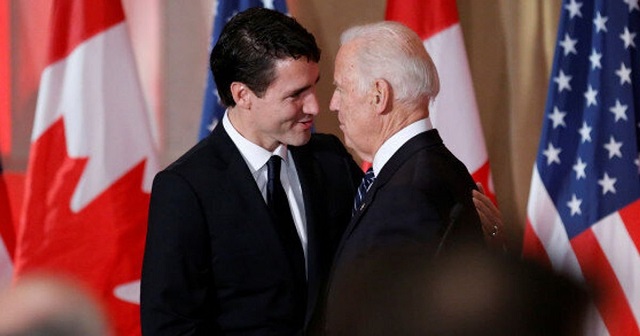Alberta
They warned me there’d be days like these… Ponoka RCMP deal with a “crazy” day

From Ponoka RCMP
Busy Close to the Weekend for the Ponoka RCMP
Ponoka RCMP dealt with a variety of calls for service which included 4 adults (3 Females and 1 male) who are now facing numerous criminal charges in relation to separate incidents that occurred on Sunday, September 23rd, 2018.
It began Sunday afternoon at 4:00 p.m. when members of the Ponoka RCMP started receiving complaints from the public that a railway maintenance truck was stolen as it was being fueled up. The truck ripped the gas hose from the pump and sped away almost hitting two vehicles.
At 4:04 p.m. that same evening, a 911 call was received from a rural resident who was reporting that a female had shown up on his property with a railway maintenance truck and that the truck is now stuck. When the property owner approached the female he noticed that a gas station pump hose was hanging from the vehicle. The female got out of the truck and attempted to stab the property owner with a screwdriver but was unsuccessful and she fled the property on foot. As the RCMP members were arriving on scene, they observed the female leaving in a truck that she had stolen from the neighboring property. Assistance was requested from the Maskwacis RCMP, the Ponoka Integrated Traffic Unit, the Wetaskiwin RCMP, and the Wetaskiwin Integrated Traffic Unit and a police pursuit was started. A short time later, the female lost control of the truck and fled from the vehicle on foot. Wetaskiwin Police Dog Services attended the area and was able to successfully locate the female trying to hide up a tree.
The 30-year-old female (of no fixed address) had a bail hearing where she was ordered to remain in custody until her first court appearance in Ponoka Provincial Court on September 28th, 2018, at 9:30 a.m. She has been charged with:
- Fail to Comply with Probation.
- Dangerous Operation of a motor vehicle.
- 2 counts of Theft of a Truck.
- Assault with a Weapon.
- Mischief Under $5000.
- Impaired Operation (by a drug) of a Motor Vehicle.
- Fail to Comply with a Physical Coordination Demand
- Flight from Police
- Driving While Disqualified.
Shortly after midnight, the Ponoka RCMP responded to a call of a disturbance at a residence where a male was assaulting the occupants. When police arrived, the 40-year-old male attempted to fight with police and was arrested with the use of a conducted energy weapon (Taser). Investigation by police revealed that a 38-year-old female in the residence had also assaulted an occupant and this lead to her arrest as well. The female was later released on a Promise to Appear in Ponoka Provincial Court on November 9th, 2018, at 9:30 a.m.
After a Bail Hearing, the 38-year-old male was ordered to remain in custody until his first appearance in Ponoka court on September 28th, 2018, at 9:30 a.m. He has been charged with:
- Assault.
- Uttering Threats.
- Assaulting a Police Office.
Approximately one hour after this event, the Ponoka RCMP were dispatched to a white Honda Accord that was reported to be travelling southbound through Ponoka and was swerving all over the road, driving on the curbs, not stopping for stop signs, and driving with no lights on. While police were on their way to this they received another call saying that the vehicle had stopped and the female driver opened the door and fell to the ground. Ponoka RCMP members arrived on scene and picked her up. The 36-year-old female from Airdrie, Alberta, was released on a Promise to Appear in Ponoka court on November 9th, 2018, at 9:30 a.m. She is charged with:
- Impaired Operation (by alcohol) of a Motor Vehicle.
- Refuse to Provide a Breath Sample.
Although there are days like these, the Ponoka Detachment advises that data shows that the RCMP Crime Reduction Strategy is working. From January to July of this year, property crimes in all RCMP detachments is down nine percent compared to the same period last year. In rural detachments, it is down 11 percent. That means, as of July this year, 648 fewer cars have been stolen and 366 fewer homes have been broken into.
Alberta
Alberta government should eliminate corporate welfare to generate benefits for Albertans

From the Fraser Institute
By Spencer Gudewill and Tegan Hill
Last November, Premier Danielle Smith announced that her government will give up to $1.8 billion in subsidies to Dow Chemicals, which plans to expand a petrochemical project northeast of Edmonton. In other words, $1.8 billion in corporate welfare.
And this is just one example of corporate welfare paid for by Albertans.
According to a recent study published by the Fraser Institute, from 2007 to 2021, the latest year of available data, the Alberta government spent $31.0 billion (inflation-adjusted) on subsidies (a.k.a. corporate welfare) to select firms and businesses, purportedly to help Albertans. And this number excludes other forms of government handouts such as loan guarantees, direct investment and regulatory or tax privileges for particular firms and industries. So the total cost of corporate welfare in Alberta is likely much higher.
Why should Albertans care?
First off, there’s little evidence that corporate welfare generates widespread economic growth or jobs. In fact, evidence suggests the contrary—that subsidies result in a net loss to the economy by shifting resources to less productive sectors or locations (what economists call the “substitution effect”) and/or by keeping businesses alive that are otherwise economically unviable (i.e. “zombie companies”). This misallocation of resources leads to a less efficient, less productive and less prosperous Alberta.
And there are other costs to corporate welfare.
For example, between 2007 and 2019 (the latest year of pre-COVID data), every year on average the Alberta government spent 35 cents (out of every dollar of business income tax revenue it collected) on corporate welfare. Given that workers bear the burden of more than half of any business income tax indirectly through lower wages, if the government reduced business income taxes rather than spend money on corporate welfare, workers could benefit.
Moreover, Premier Smith failed in last month’s provincial budget to provide promised personal income tax relief and create a lower tax bracket for incomes below $60,000 to provide $760 in annual savings for Albertans (on average). But in 2019, after adjusting for inflation, the Alberta government spent $2.4 billion on corporate welfare—equivalent to $1,034 per tax filer. Clearly, instead of subsidizing select businesses, the Smith government could have kept its promise to lower personal income taxes.
Finally, there’s the Heritage Fund, which the Alberta government created almost 50 years ago to save a share of the province’s resource wealth for the future.
In her 2024 budget, Premier Smith earmarked $2.0 billion for the Heritage Fund this fiscal year—almost the exact amount spent on corporate welfare each year (on average) between 2007 and 2019. Put another way, the Alberta government could save twice as much in the Heritage Fund in 2024/25 if it ended corporate welfare, which would help Premier Smith keep her promise to build up the Heritage Fund to between $250 billion and $400 billion by 2050.
By eliminating corporate welfare, the Smith government can create fiscal room to reduce personal and business income taxes, or save more in the Heritage Fund. Any of these options will benefit Albertans far more than wasteful billion-dollar subsidies to favoured firms.
Authors:
Alberta
Official statement from Premier Danielle Smith and Energy Minister Brian Jean on the start-up of the Trans Mountain Pipeline

-

 Education20 hours ago
Education20 hours agoSupport a young reader through the Tim Hortons Smile Cookie campaign
-

 Automotive2 days ago
Automotive2 days agoVehicle monitoring software could soon use ‘kill switch’ under the guise of ‘safety’
-

 Addictions2 days ago
Addictions2 days agoCity of Toronto asks Trudeau gov’t to decriminalize hard drugs despite policy’s failure in BC
-

 Opinion1 day ago
Opinion1 day agoClimate Murder? Media Picks Up Novel Legal Theory Suggesting Big Oil Is Homicidal
-

 Business2 days ago
Business2 days agoWhen politicians gamble, taxpayers lose
-

 Bruce Dowbiggin2 days ago
Bruce Dowbiggin2 days agoIt Gets Late Early These Days: Time To Bounce Biden & Trudeau?
-

 Economy1 day ago
Economy1 day agoOttawa’s homebuilding plans might discourage much-needed business investment
-

 Energy21 hours ago
Energy21 hours agoNet Zero’s days are numbered? Why Europeans are souring on the climate agenda






